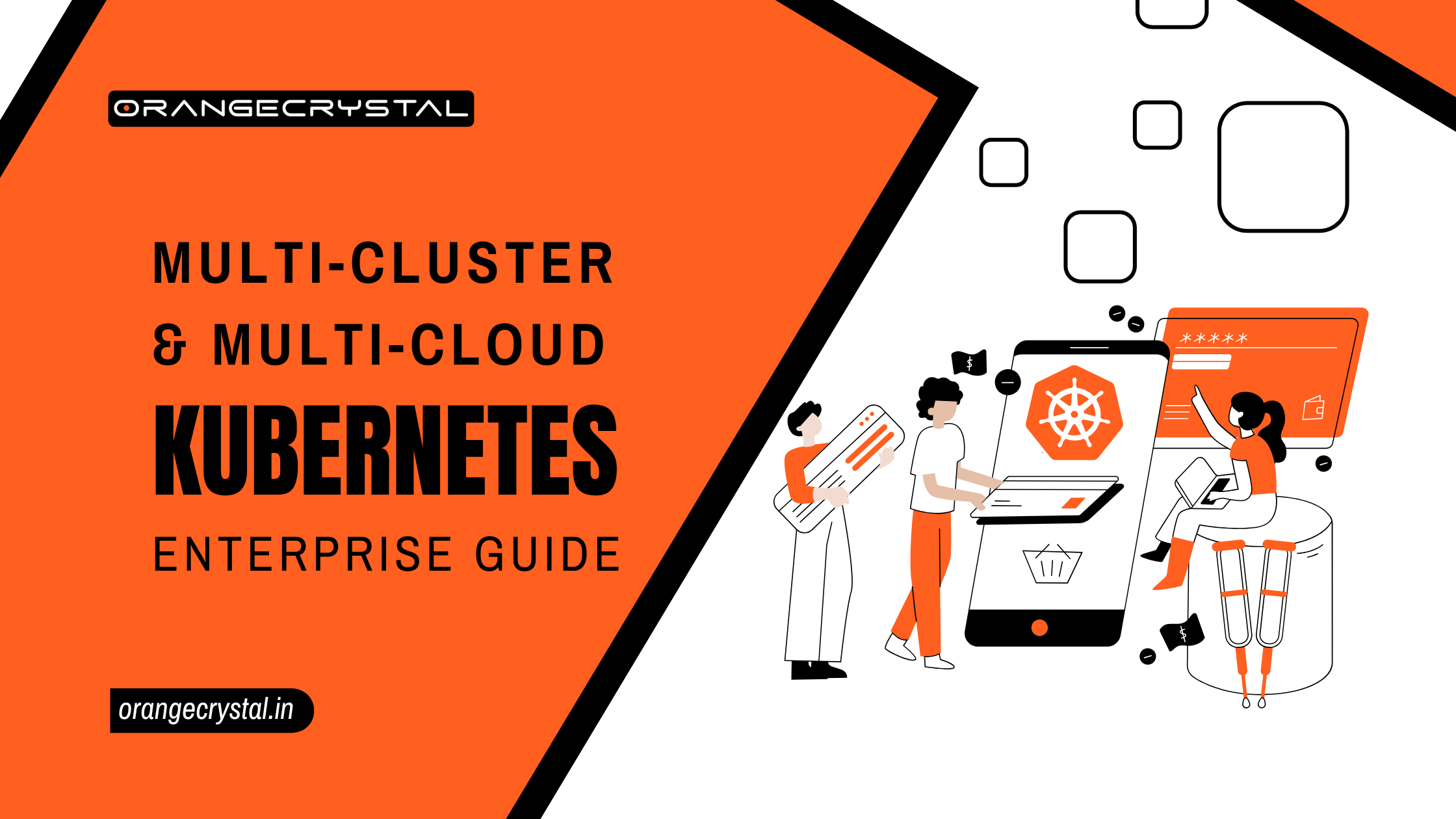The Enterprise Guide to Multi-Cluster and Multi-Cloud Kubernetes
In today’s digital-first enterprise landscape, agility, resilience, and scalability are non-negotiable. As organizations modernize their infrastructure to support global workloads, multi-cluster and multi-cloud Kubernetes architectures have emerged as key enablers of this transformation. But with opportunity comes complexity.
Operating Kubernetes at scale across diverse environments—spanning public clouds, private data centers, and edge locations—introduces a new layer of operational, security, and governance challenges.
For enterprise IT leaders, understanding these dynamics is critical to ensuring a seamless and cost-effective Kubernetes strategy. This post offers a strategic look into the challenges of multi-cluster, multi-cloud Kubernetes environments, and the enterprise-grade tools and approaches—like Cluster API, Google Anthos, and Azure Arc—that are helping organizations succeed.
Why Enterprises Are Adopting Multi-Cluster and Multi-Cloud Kubernetes
Enterprise adoption of multi-cluster and multi-cloud Kubernetes is driven by several strategic objectives:
- Resilience and High Availability: Distributing workloads across clusters and regions reduces the risk of service disruption.
- Regulatory Compliance: Localized clusters help meet data residency and sovereignty requirements.
- Vendor Diversification: Avoiding cloud vendor lock-in supports negotiation leverage and operational flexibility.
- Workload Optimization: Matching workloads to cloud-specific capabilities (e.g., GPU availability, cost, proximity) improves performance and ROI.
These motivations are compelling—but scaling Kubernetes beyond a single cluster or cloud provider introduces significant challenges.
Core Challenges of Multi-Cluster, Multi-Cloud Kubernetes
1. Operational Complexity
Each Kubernetes cluster, regardless of where it runs, is a distributed system requiring monitoring, upgrades, patching, and configuration management. Managing multiple clusters magnifies this complexity exponentially.
Without a unified control plane, enterprises often face:
- Inconsistent policies across environments
- Siloed observability and alerting
- Redundant manual operations
2. Networking and Service Discovery
Kubernetes clusters are inherently isolated. Connecting services across clusters—especially across clouds—requires advanced networking solutions, custom DNS strategies, or service meshes.
Maintaining low latency, secure communication, and reliable service discovery across clusters is non-trivial and requires careful architectural planning.
3. Security and Governance
Multi-cluster deployments raise concerns around:
- RBAC consistency: Ensuring role-based access is synchronized across environments.
- Policy enforcement: Applying the same PodSecurityPolicies or Kyverno rules uniformly.
- Auditing: Aggregating logs and audit trails for compliance across clouds.
Inconsistent security postures can introduce vulnerabilities or non-compliance risks.
4. Application Portability and Lifecycle Management
While Kubernetes abstracts many infrastructure differences, deploying and updating applications consistently across clusters requires robust automation, GitOps workflows, and continuous integration pipelines tailored for multi-cluster environments.
Enterprise Solutions for Multi-Cluster and Multi-Cloud Kubernetes
To address these challenges, several enterprise-grade platforms and tools have emerged that offer centralized management, policy enforcement, and lifecycle automation. Below are the key solutions gaining traction in 2025:
Cluster API (CAPI)
Cluster API is an open-source Kubernetes subproject that standardizes cluster lifecycle management across infrastructure providers.
Enterprise benefit: It enables declarative cluster creation, scaling, and upgrades through Kubernetes-style APIs—regardless of whether the target environment is AWS, Azure, vSphere, or bare metal.
Use case: An IT operations team can use Cluster API to maintain consistent Kubernetes cluster definitions in Git across staging, production, and failover environments.
Google Anthos
Anthos is Google Cloud’s multi-cloud Kubernetes platform designed for hybrid and distributed workloads. It offers:
- Centralized configuration and policy management
- Built-in service mesh (Anthos Service Mesh)
- CI/CD integrations with Cloud Build
- Support for on-prem, AWS, and Azure
Enterprise benefit: Anthos abstracts operational overhead and lets teams focus on workloads rather than underlying infrastructure, with a single pane of glass for multi-cloud Kubernetes.
Integration scenario: A financial services enterprise can deploy customer-facing microservices across GCP and Azure while maintaining compliance and SLOs centrally via Anthos Config Management.
Azure Arc
Azure Arc extends Azure’s management capabilities to Kubernetes clusters hosted outside Azure—on-prem, AWS, or edge.
With Arc, enterprises can:
- Manage policies, security, and inventory centrally
- Deploy Azure services (e.g., Azure ML, Azure PostgreSQL) on any Kubernetes cluster
- Enable GitOps-based deployments with Flux
Business impact: Azure Arc is particularly valuable for enterprises with Microsoft-heavy ecosystems who want to unify governance and integrate with Azure-native tools without full cloud migration.
Use case: A healthcare provider running Kubernetes in local data centers and Azure can use Arc to maintain HIPAA compliance policies across both environments with minimal overhead.
Strategic Considerations and ROI
When designing a multi-cluster, multi-cloud Kubernetes strategy, enterprise IT leaders should evaluate:
- Total Cost of Ownership (TCO): Account for management tooling, network latency costs, and compliance overhead.
- Operational Maturity: Consider whether internal teams have the DevOps/SRE skills to operate multi-cluster Kubernetes, or if a managed solution makes more sense.
- Tooling Compatibility: Choose platforms that integrate seamlessly with existing CI/CD, monitoring, and IAM tools.
- Business Agility: The ability to deploy anywhere, failover rapidly, and scale efficiently provides long-term competitive advantage.
The ROI of multi-cluster Kubernetes isn’t just technical—it’s strategic. Enterprises that get it right are better positioned to deliver resilient services, meet regulatory mandates, and scale innovation without being locked into any single cloud provider.
Final Thoughts
The future of enterprise IT lies in distributed, cloud-agnostic, and highly resilient architectures—and Kubernetes sits at the heart of this evolution. Multi-cluster and multi-cloud Kubernetes deployments are no longer experimental; they are becoming essential for enterprises aiming to build future-ready infrastructure. Yet, the journey is complex.
Whether you’re evaluating Cluster API for automated cluster provisioning, piloting Anthos for hybrid cloud governance, or extending control with Azure Arc, success depends on having the right strategy, tools, and guidance.
Get Expert Help on Your Kubernetes Journey
Our cloud-native experts at OrangeCrystal specialize in helping enterprises architect, deploy, and manage scalable multi-cluster Kubernetes environments across cloud and on-prem. From strategic planning to hands-on implementation, we deliver tailored solutions aligned with your business goals.
Contact us today to schedule a consultation and explore how we can help you maximize the value of Kubernetes across your enterprise.



Leave a Reply